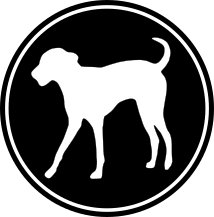Continued from Part 3 There are a few more points I’d like to mention regarding defense drive. I strongly believe that these three defense drive categories are pre-determined and that this predetermination sets limits to how much we can change through training. Comments like “we need to put more defense into this dog” make me …
Continued from Part 2 I believe that reading dogs is one of the most important parts of dog training. In part one of this article I tried to address general qualities in dogs that we hear often when dogs and their training are discussed. I deliberately limited myself to traits that deal with perception and …
Continued from Part 1 Nerve Nerve has become a catch phrase for almost everything. Good nerve, bad nerve, weak nerve, strong nerve, thin nerve, thick nerve. Where do these terms come from? And more importantly, what do they mean? The nerve itself is nothing more than a fibrous long cell that transmits impulses from parts …
The SV celebrates 100 years this year, so for all intents and purposes Schutzhund training has been around for close to 100 years as well. In that time countless books have been written, and even more seminars have been taught, and let’s not even start on how many conversations and discussions were held late into …
Prey-drive, defense-drive, fighting-drive, etc. are the catch phrases of modern protection training. They are thrown around at every seminar we attend, they are the subjects of countless articles, but rarely do people agree on what is being said about these “drives.” About 20 years ago Helmut Raiser revolutionized Schutzhund protection training by identifying which inborn …
Continued from Part 1 The dog needs to learn to accept guidance from the handler. The key word here is guidance. The way many dogs act the first time an obedience exercise is asked of them in protection, I would say it is not disobedience that is happening. Often the dog can’t even hear the …
It’s club training day, phase B training is coming to an end. Time for the good stuff: Protection. Once the helpers, training directors and handlers set their mind on protection, obedience becomes a distant memory when it comes to training concerns. Obedience is over with the end of phase B. Or is it? Again, I …
After my last article I was really stumped for my next topic. There are so many things one can write about. But with a lot of topics I found that a magazine article would either be too general and not of any great value or way too long and detailed to go into a magazine. …
… Previous Restraint, tapping, sniffing, platz, reward. Be sure to maintain the restraint part of the set up. Handlers sometimes get a little rushed and let go of it too fast. Hold the dog back a bit and control the situation. You can do the same thing alone, without an assistant. But you have to …
… Previous Part 1&2 of this article was a discussion of the fundamental concepts of tracking and teaching tracking. I’d like to focus part 3 on a crucial part of Schutzhund (or VPG) tracking, articles. I believe that this is also one of the fundamentals. After all, the description of the task in the trial …
